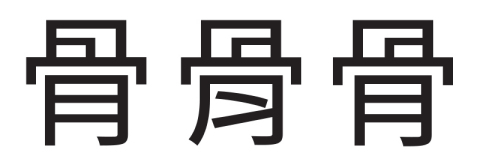Adobe and Google collaborate on open source font for Japanese, Chinese and Korean
 Wednesday, July 16, 2014 at 8:41AM
Wednesday, July 16, 2014 at 8:41AM  Adobe just announced the release of Source Han Sans, an open source typeface supporting Japanese, Chinese and Korean, as well as Latin, Greek and Cyrillic alphabets.
Adobe just announced the release of Source Han Sans, an open source typeface supporting Japanese, Chinese and Korean, as well as Latin, Greek and Cyrillic alphabets.
It was developed in collaboration with Adobe’s key partner Google and contracted foundry partners across East Asia (Changzhou SinoType, Iwata Corporation, and Sandoll Communication). Source Han Sans marks a record-breaking typeface in terms of size, scale, complexity and support for Japanese, Chinese and Korean all within the same font family. It provides designers and developers creating content for international audiences one uniform font to use in print and Web files no matter the language - eliminating the need to license multiple fonts.
First Open Source Typeface to Support Chinese, Japanese and Korean in One
While the Japanese kanji, Chinese hanzi and Korean hanja characters share historical derivation, the typefaces have typically been individually created to support each language, with separate sets for Traditional and Simplified Chinese. Source Han Sans marks the first open source font family to support each of the languages, as well as regional variants, within the same font family, supporting languages spoken by 1.5 billion people.
- Source Han Sans supports Japanese, Traditional Chinese (including Taiwan and Hong Kong SAR), Simplified Chinese, and Korean (with hangul syllables), as well as Greek, Latin and Cyrillic alphabets.
- Source Han Sans is available in seven weights in full fonts, as well as region-specific subsets, equaling a total of 42 typefaces, designed for screen devices and print.
Web Leaders Collaborate on Largest-Ever Open Source Font
In order to account for all regional variations, Adobe, in collaboration with Google and foundry partners Changzhou SinoType, Iwata Corporation, and Sandoll Communication, designed 65,535 glyphs for each font, the maximum number for the OpenType format. The development and design took more than three years, with a team of more than 100 people, motivated by a common goal to help unify the international design and development communities.





















Reader Comments